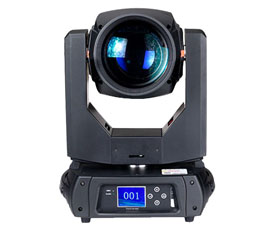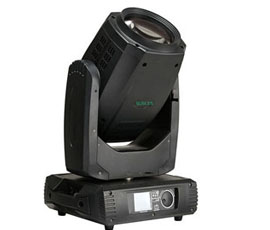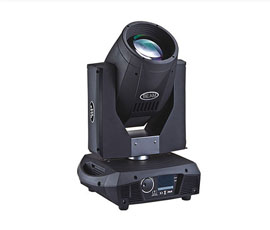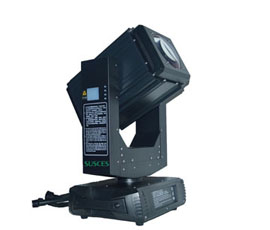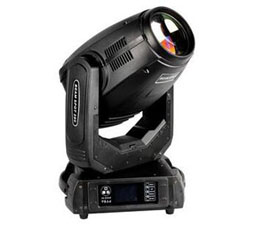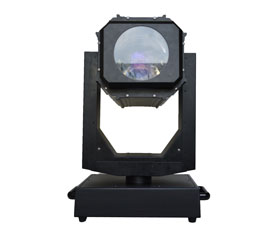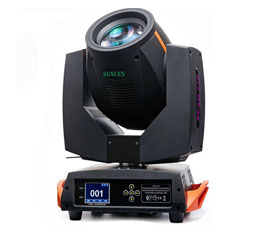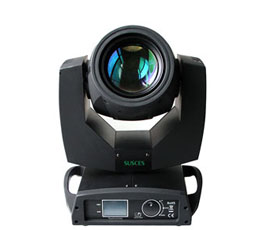
The setting and operation of the stage return system
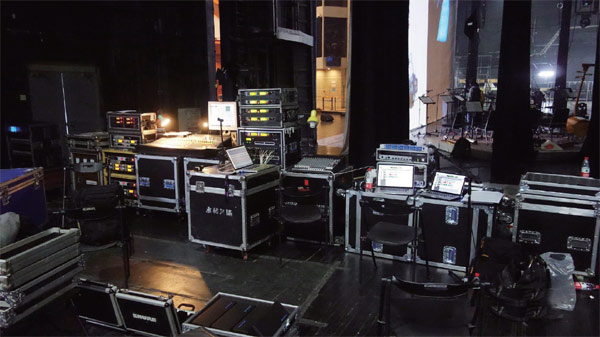
1 Summary
"Return" is the English "Fold-back" translation of the term, it is also known as "stage monitoring (Stage Monitoring)", the author of the above two statements, called "stage return". The stage return system is an indispensable part of the contemporary audio system. It takes on the important role of providing the sound signal for the actors, and helps them to hear themselves, the band and the band in a variety of stage environments. , As well as accompaniment and point number tips and other related content. The volume, proportions, and sound quality of these signals directly determine the performance of the actors, and have a crucial impact on their performance balance, dynamics, pitch and rhythm. The microphone input is separated by an Audio Splitter, which provides the actor with a complete audio system that includes a mixer and a return speaker, and is operated by a dedicated return tuner. Medium-sized performance of the practice.
Compared to the settings and operation of the main extension tuning, the stage return tuning is more complicated, more consideration, and more need to make rapid adjustments and limited compromises according to the actual situation. The main defender only needs to make a sound for the audience, and the return tuner needs to produce a variety of signals according to the needs of different actors on the stage. Not only that, but also need to manage all the tone-based distribution of the input signal, and assume the intercom system to set up and set up work.
Although the stage back to the tuning work often need to follow the actual requirements of the actors to carry out, but it is not without law and basis. In general, the stage back to the system to build and set up is more complex, it requires the tuner at the same time to complete a variety of different functions of the task, and at the same time to meet the needs of multiple groups. So the system connection and debugging on the need for a strong logic and rational, so as to be able to do in the specific operation of fast and accurate, and according to the actual needs of flexible adjustment.
2 the composition and function of the stage return system
A stage return system consists of five main parts, namely: return to the mixer, return speaker, in-ear return, personal monitoring system and intercom system. The following five parts of the function to do a brief introduction.
2.1 return the mixer
Back to the mixer as the core of the stage back to the system, is the hub of the entire system. It takes on important functions of bus allocation, monitoring, effect processing and output scaling. The setting method of the return mixer determines whether the whole process is fast and reasonable. At present, due to the complex configuration of all aspects of the show, usually need to use more output bus with a digital mixer to complete the stage back to the production of the task.
2.2 return the speaker
There are three main types of return speakers: floor-mounted speakers, side-to-side speakers and subwoofer for return. Returning loudspeakers are loudspeakers that can withstand extreme loads and often require high output power, especially in rock and roll environments such as rock and roll.
Floor-type return speakers are usually coaxial or non-coaxial design of the two-point sound source speakers, commonly used to be a single singers or players to provide a return (this article does not discuss evenly distributed in the stage lips, and only feed Single-signal floor speaker group), the settings can be mono, can also be stereo, can also be two (4) speakers to axis symmetrical way to send two sets of stereo signals, the signal feed content is based entirely on the actor Request to set. Due to the low latency of the low-frequency response of the floor-mounted loudspeaker and the limited energy intensity that can be restored, it is necessary to add an additional subwoofer to supplement it with low frequency for low frequency reduction. In the electro-acoustic band, usually need to use this speaker set is the drummer, to the bottom of the drum and bass to feed the bass signal, the need to the appropriate proportion into the ultra-low speaker. The bassist is equipped with a corresponding bass speaker, so there is no need for a separate subwoofer.
Side back speakers have an important role in the production of large stage returns. It uses two conventional full-band speakers (point-of-the-art loudspeakers or line array speakers with ultra low systems) located on the stage up and down the table, close to the lips and point to the actors on the stage. The side-back speakers are mainly used in electro-acoustic bands, operas, musicals (including drama) and symphony orchestra. For the opera and musical, use the side of the speaker out of the stage for the sake of consideration, the return speaker will not appear in the audiences attention, the contents of the feed signal, including the music band, the background band and the actors of the lines and singing; The playback loudspeakers used in the sound reinforcement are available in a variety of ways, with only one of them being used in conjunction with other ways. For the symphony orchestra, there is a natural balance between the band members, so the main feed back to the speaker command (for rehearsing), solo, solo actor, and the hosts signal. In both cases, the use of the side-back speakers needs to cover the entire stage, so often more than one group, and each group of speakers issued by the sound pressure level is relatively low. For the performance of the electro-acoustic band, the side-back speakers are usually only one set, often accompanied by a high sound pressure level, to the actors to send the whole content of singing to create a sense of overall, in the playback sound pressure level Low, you can create a sense of the environment, especially when the outdoor performance is very obvious.
2.3 in-ear return
The term in the ear returns comes from the English "IEM (In-Ear-Monitor)", which feeds the return signal directly to the actor through the ear-style headphones. This way has a good isolation from the noisy environment on the stage, which helps the actor to hear the sound more clearly with a smaller sound pressure level, thus greatly reducing the overall sound pressure level of the loudspeaker system on stage, The possibility of feedback. In-the-spot returns have a very important role in the performance of accompaniment and solo pick-up, especially in the event that the actor needs to listen to the point number, the bands chief instruction and the directors instruction, the ear-style return has an irreplaceable role. In the ear-type transmission can be wired transmission, it can be wireless transmission, the signal feed can be either mono mode, it can be stereo mode, do not repeat them here.
2.4 personal monitoring system
Personal monitoring system is based on the network of audio transmission protocol for signal transmission and distribution of the stage return system, which is essentially through the network distributor to connect multiple audio matrix. (Such as a drum, keyboard, etc.) or a single signal (such as solo, solo, point number, etc.) that is made and adjusted by the return tuner to the network dispenser, by the network distributor (with Aviom D800-Dante For example) to each station (to Aviom A360 personal monitor mixer, for example, see Figure 1) to feed the signal. Each actor is equipped with a station, they can according to their own needs to flexibly adjust the volume of the signal ratio. This personal monitoring system greatly reduces the workload of the return tuner, for the actors to provide a more flexible adjustment mechanism to improve the efficiency. And thus in many large-scale concerts and variety show which have been widely used.
2.5 intercom system
The intercom system here refers specifically to the system required for communication between the master and the tuner, between the tuner and the actor, and between the tuner, the actor and the director (this does not involve the performance The internal communication (Inter-com) system used by the various departments in the communication process). In the course of rehearsal and performance (mainly in the course of rehearsals), the tuner and director need to communicate effectively with the actor in order to promptly and accurately issue the instructions while understanding the needs of the actors. At the same time, And return tuners also need to be close and effective communication. Especially in the large-scale performances, intercom system is a very important part of the building. One of the most basic intercom systems consists of four intercom microphones, two monitor speakers, a return speaker used by actors on stage, and earphones. 4 intercom microphones are set in the main amplifier tuner, return tuner, band chief and director around, which directors usually use wireless microphone, the other three microphones are common for the switch with the moving microphone; 2 monitor the speaker Are located in the main extension of the tuner and back to the tuner side. These microphones and monitor speakers are connected to the return mixer for flexible distribution, see the fourth section later.
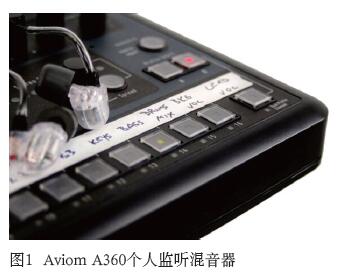
3 stage return system connection
The connection of the stage return system is through the return of the mixer different output bus and different groups of speakers, in-ear return, personal monitoring system of the network distributor and the intercom speaker connected to meet the flexibility of the feed, do not interfere with each other, logic Clear and easy to operate requirements.
3.1 Output the feed signal through the mixer
The main output of the mixer is the most basic bus of the mixer, which adds the signal from the fader on each input channel and outputs it through a stereo. The main output is usually used to feed the most important set of stereo signals on the stage, such as a stereo floor-style return speaker used by the lead singer, a stereo in-ear return, or a back-to-back speaker.
Since the main output of the mixer is unique, its signal connection also determines the connection of other return devices. For example, if the in-ear return of the lead singer is sent through the main output, all other stereo return signals must be sent through the stereo auxiliary output before the fader. In general, the signal sent by the mixers main output must be adjusted for the entire performance, especially the input channel, which affects whether all of the fader output signals can be sent. For example, in some tracks, it is necessary to mute the instruments that are not played. When the auxiliary output of the signal extraction point for the fader (Pre Fader), Mute (Post Mute), once the input channel mute switch is turned on, the channel sent to all the auxiliary output signal will be cut off, which is required ; If only a mute switch for an input channel to an auxiliary output is turned on (the FlipFader mode is usually used when the mixer is operated, the amount of auxiliary output is controlled by the fader. In this case, it is prone to the above operational errors), it will still appear in the return of other actors. Therefore, a trade-off is required to determine whether the main output is for in-ear return (same as a stereo floor-mounted speaker) or a side-back speaker. The main principle is as follows: When there is only one major actor (such as the protagonist of the concert), the main output for the ear return (or floor return); when the performance of a number of equally important actors (such as stars singing, And at the same time on stage), the main output can be used for side-back speakers. Of course, there is a very rare connection, the mixer is not connected to the main output of the main ring to send back, nor to connect back, but for monitoring purposes, the fourth part of the detailed.
3.2 The auxiliary output feed signal via the mixer
The feeding of the return signal through the auxiliary output of the mixer is the most common setting for the return tuning. Since the auxiliary output signal extraction point is flexible, it is possible to ensure that the proportions between the outputs of the mixer do not interfere with each other. Therefore, it can be applied to all return output requirements. Attention should be paid to whether the signal extraction point of the mixer auxiliary output is the pre-fader or the post, and there are still different options for the pre-fader. For example, the Avid Venue mixer has a further chooseion of Pre EQ and PreMute for the fader, which indicate that the auxiliary send is not controlled by the channel effects and the mute button, respectively. Pre EQ is usually chooseed when a mixer is responsible for the main drive and is responsible for returning to ensure that the tone adjustment made by the tuner against the viewer does not affect the actors on the stage; and Pre Mute is used in the reference signal Case. In the independent return production, you must avoid the use of Pre EQ and PreMute. Auxiliary output can use either mono mode or stereo mode, and its left and right relationship needs to be the same as the mixers main output, ie, "actor perspective". In addition, for the stereo auxiliary output, use the "Follow Channel Pan" This option allows the stereo sound in the stereo output to be consistent with the sound of the input signal, which can greatly improve the efficiency and save the setup time.

In addition, for the subwoofer used by the drummer, the auxiliary output of the signal should also be in the pre-fader mode, so that if you change the volume of the bottom drum in the main output bus, the amount of drummers low- changes happened. This is the difference between the way in which the subwoofer is connected with the auxiliary output after the fader to connect the ultra low system.
3.3 Feed the signal through the mixers matrix
The essence of the matrix is a matrix mixer, which should be viewed from both input and output. The input of the matrix mixer can call any output bus (main output, marshalling output and auxiliary output) and any input channel (microphone input, effect return, etc.) of the mixer, adjust the output of the mixer and output it at the output The Therefore, the use of matrix output is often accompanied by marshalling output and auxiliary output.
The matrix output of the mixer is relatively less used in the return tuning, and it is mainly for the case that there are multiple singers who use multiple in-ear returns when the request is not very high. First group all the input channels of the band, the group as a set of matrix mixer input (see Figure 2), and then several singers microphone signal as a matrix mixer input. When the band tone and balance ratio adjustment is completed, then the band and the singers microphone ratio in the matrix output to do a further balance. This way to avoid the proportion of each singer to adjust the band by the situation, with the same band signal to meet all the singers, but at the same time to ensure that all the human voice signal ratio adjustable.
4 stage return system settings in the problem
4.1 Listening issues
The problem of listening is the more complex and important problem that the tuner faces in the actual work. The tuner is on the side of the stage and is different from the sound environment of the actor on the stage. This is a manifestation of whether the instrument is heard, the size of the sound from the surrounding instrument, and the sound of the main speaker system Size and so on. But to ensure that the tuner and the player from the floor to return and inward return to hear the contents of the same, effective monitoring is to send back the tone of the work of the premise and basis.
The monitoring work of the mixer is done by monitoring the bus, and the tuner is usually provided with a stereo back-mounted speaker and an in-ear headset as a listening tool to send different signals to the playback device for monitoring. In the work of the return tuning, the tuner often need to get in the monitoring bus:
(1) a signal of an input channel;
(2) a mixed signal in a return speaker (headset).
In the actual mixer settings, usually need to consider the impact of factors:
(1) the equalization correction of the return speaker (headphones) on the output channel; (2) the signal extraction point for the pre-fader monitor; and (3) the volume hopping of the pre-fader monitor and the fader. There are two main aspects to monitor the meaning of an input channel: one is to confirm whether the signal is normal, such as whether the microphone is installed correctly, the signal path is a problem, and so on; Second, monitor the release, balance and dynamic effects applied to the signal after Get the effect. By setting the input channel to the front of the fader, it is easy to meet the first function, and the majority of the digital mixer fader before the signal extraction point for the effect, so even if the fader is not pushed, you can listen To the effect of the equalization and dynamic effects applied to the signal, the second function can also be met. Listen to a mixed signal in a return speaker (headset), which is a fader signal for listening to an output bus of a mixer. It means listening to the fact that an actor has heard that the sounds and proportions of the instruments in the overall signal are appropriate The This function is easily met by making a fader after the output channel. For wireless in-ear returns, the tuner can listen to the singers signal by wearing a pockets receiver with the same frequency as the singer; for a personal listening system, you can set the same machine as the player at the console Stand to listen. The above two kinds of monitoring methods also reflect the general steps of the return tuning operation. First, ask the actor to play, choose the input channel fader before the monitor (the following will be "input channel fader before listening" abbreviated as "input monitor", the "output channel fader monitor" abbreviated as "output monitor"), And then adjust the input signal to the output bus under the listening state; finally, according to the monitor at this time to get the output channel, and then choose the output channel corresponding to the actor, start the fader after the monitor, and then send the input signal to the monitor state of the output bus; Of the sound, the volume and tone to do further fine-tuning. According to the above description, the setting of the return mixer monitor does not seem to differ from the master amplifier. Now consider the factors that balance the correction. (2) the output channel equalization on the return of the speaker (headset) the overall tone of the modified (parametric equalization), the output of the channel, ; (3) the output channel equalization on the return speaker correction correction (icon equalization). When the balance correction occurs, the setting of the monitor module becomes complicated. This complex situation from the monitor bus in different monitoring links can reflect the above-mentioned balance correction effect. For the input monitoring and output monitoring need to hear the above three effects. The monitor bus itself is not a balanced correction, so the output listening to hear all three kinds of equalization correction effect is no problem, the main problem exists in the input monitor how to correctly restore the tone to adjust the balance and feedback correction balance. Stage return system in the equipment chooseion on a basic requirement, that is, all the floor-type back to the speaker must use the same model with the product, regardless of the actors or tuners are so. Here only to discuss the issue of floor-mounted speakers, not consider in-ear headphones. On the one hand because the ear headphones do not need to pay back the balance correction, on the other hand can not ask the tuner with all the actors are the same headphones (even if there are so many headphones, work too late to replace). When the device used is an external clocked speaker, the tone modification of the speaker can be done by the internal balance of the processor. In this case, the harmonization of the tone of the speaker can be regarded as the speakers own attributes, regardless of its influence The However, when the device used is an internal split loudspeaker, it is often necessary to use the parametric equalization on the mixer output channel to adjust the tone. And this adjustment can not be reflected in the input monitor bus, feedback correction is equal to the same. This is the case that the effect that the tuner sees when entering the monitor is very different from the actual effect of the loudspeaker used by the actor and is therefore not representative. There are two solutions available here. (1) from the operating habits to avoid this problem. Reduce the role of input monitoring, only through it to confirm the signal is normal and gain adjustment, the tone adjustment of the work on the output monitor to carry out. But the drawback of this method is that once the show begins, all the actors begin to play, they can not listen to a single signal to get the correct sound, only by listening to the output of the mixed signal to a single signal to adjust the tone. (2) Monitor the input signal with the main output bus of the mixer, as mentioned earlier. This setting has two main points: first, the main output port without connecting any equipment; second, the sound modification and feedback correction and balance applied to the main output bus. When performing the input monitor, choose the monitor output of the mixers main output and push the channel fader that needs to be monitored to 0 dB to perform all debugging. The advantage of this method is that the input monitor can completely restore the role of triple equalization correction, and in the performance process, you can monitor a single input signal, its accurate tone processing; defects in the operation process is more complex, and take the main output Bus, the channel mute operation caused inconvenience. When using the main output bus for input monitoring, it is necessary to use the auxiliary output to feed the return signal of the lead singer. When the tuner mutes part of the channel between different tracks, it must be switched back to the main output interface, which is easier to cause misuse. Of course, in the case of full rehearsal, you can also use the mixers automated snapshot to solve this problem. 4.2 Talking system connection problems Intercom system connection by the main expansion of tuners, return tuner, band chief and director of the multi-party talk to the needs of the decision. Flexibility and privacy are two issues that need attention in the intercom system connection process. The flexibility of the intercom system is mainly reflected in the need for flexible interchange between the main defender, the return tuner, the actor and the director, and the flexibility of either party to reach the other three. The usual solution shown in Figure 3, all the intercom microphone (input) and all the talkers (output) are connected to the return mixer, by the return tuner through the auxiliary output of the way to reach the At the office. This connection requires the use of a 1-in-1 out-of-the-box between the main extension and the return console, connecting the intercom microphone (input) and the intercom speaker (output) Sound station.
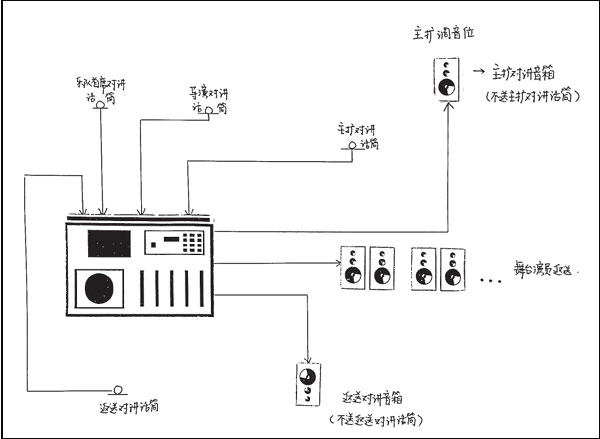 Figure 3 intercom system flexible interoperability system of the privacy system is mainly reflected in the return of the mixer in the auxiliary output of the sending mode, the return of the tuner to ensure that the director and the sound engineer for the actors instructions can be successfully conveyed, but also To ensure that when you need to confront the content is limited to the sound division and the sound division, or between the two sound division and director. Here are a few points of attention. (1) return the tuners microphone signal does not send back to the tuners intercom speaker, the main expansion of the microphone microphone signal does not send the main expansion of the speakers intercom speaker, which is mainly to avoid feedback problems. (2) The director and the bands chief microphone signal need to be sent to the main speaker and the tuners back talk speaker at the same time, and remain always open. (3) The tuner and the directors microphone signal need to be chooseively sent to the actors headphones and the return speaker. The dialogue between the two tuners is usually not expected to be heard by the actor, and the director and the tuners intercom microphone in the performance process is strictly prohibited into the return speaker. In some of the performance production, the director of the intercom microphone in the performance process need to be fed to some of the actors headphones back. Therefore, the main defender, return tuner, band chief and director of the intercom microphone should be fed through the way before the fader to the two speakers of the intercom speaker, as long as the input channel mute key to close You can make an instant call; and the above four-way intercom microphone should be fed through the fader after the way to all the actors on the stage, any one party and the actors need to talk, just push the input channel fader, you can Speak the signal to the actors headphones or return the speaker. 4.3 Reverb Setting Problems with Quay Tuning Sometimes, the actors need to hear some of the reverberations in the return speaker or in-ear return, the more common is the vocal, acoustic guitar and some wind instrument players who want to hear Own singing or playing with reverb, but do not want to hear other players instruments with reverb. In the process of master-tuning, a number of different input signals can be sent to the same reverb through one auxiliary output bus, and the ratio of the dry signal and the wet signal can be adjusted by the size of the transmission. This way of working for the return tuning will be a problem. For example, in a band, guitar and flute players want their instruments in the return with a reverb, if only through a auxiliary bus, respectively, the guitar and flute signal into the reverb, and then the reverberator return signal The return of the two players to the system, there will be such a situation: when the guitar player needs more guitar reverb, the flute player return system guitar reverb will become larger, in this case , The reverberation of the flute will be reduced in the flutes return system if the signal sent to the flute player is reduced as a whole. In short, when changing the amount of reverberation of a musical instrument, the reverb of the instrument will change, the more the need for reverberation of the instrument, the more obvious the problem. Give a more extreme example: seven original eco-singers wearing both ear-style return to perform, their singing requires a lot of reverb in the headset to give people a loud mix. The return tuner is fed to the seven headsets via 7 different auxiliary outputs (AUX1? AUX7), sending their signals to a reverb through only one auxiliary output (AUX8), and the reverb return signal Respectively, to 7 headphones. For each singer, his dry signal needs more than the rest of the singers wet signal (for AUX1, assuming that the singer 1s dry signal transmission is 0, the remaining six singers dry signal transmission is -10, the other Singers return and so on), and they hear the wet signal is as large (assuming all singer sent to AUX8 which is sent to 0). When a singer to hear his dry signal than other singers dry signal, and his wet signal and the other singers wet signal is the same, the first reaction is to feel that their reverberation is not enough, and then asked to send back tuning The division will increase his reverberation. At this point the return of the tuner can carry out the two operations, there will be problems: If the singer sent to the reverb AUX8 increase, then the other singers headphones, the singers reverb will become larger, relative For example, the other persons own reverb will become smaller; if you add the reverb to the amount sent to the singer, everyones wet signal in his headset will also become larger. Both of these operations will cause the singer himself or other singer dissatisfaction, and then lead to more meaningless adjustment. In principle, for each player who needs reverberation, the player provides a separate reverb that is the way to solve this problem. However, the drawback of this solution is the need to use a large number of auxiliary bus to send reverberation, many mixing stations in the completion of conventional bus connection, can not provide sufficient auxiliary output to the work. On this issue, the SSL Live Mixer Stem bus or personal listening system provides a nice solution for a separate reverb chooseion on each station. If there is no such tool in the hands, and the auxiliary output resource is exhausted, it is also possible to consider inserting a reverb on the input channel and controlling the reverberation effect of the sound by adjusting the wet / dry ratio. Although this method still has limitations, But belong to a reasonable category of compromise. 5 feedback problem feedback problem is the scene of the sound reinforcement workers have to face the problem, especially the return speaker system feedback, the success of the show plays a vital role. The feedback is the result of the sound source being picked up by the microphone and then amplified by the sound reinforcement system (the sound from the speaker is picked up again by the microphone). How to get a bigger sound pressure level from the speakers without generating feedback is the focus of all engineers. The occurrence of feedback depends mainly on the two conditions: the gain condition and the phase condition. Compare the sound source to the microphones sound signal and return the speaker to the microphones sound signal (the condition under this study is that a player uses a microphone to correspond to a return speaker) while both meet both the gain condition and the phase condition When the feedback occurs. 5.1 How much feedback can be obtained No matter what method to use, can not avoid a basic principle: that is, when the overall system gain (Unity Gain) is 1, the feedback begins to appear, which means that when the speaker reaches the sound of the microphone and When the sound source reaches the sound of the microphone is equal, the system starts to call back. It is assumed that the microphone is a transducer with the same sensitivity to any frequency in any direction, and the return system has the same amplification gain for the full band signal. In this case, as long as the return of the speaker to reach the microphone sound and sound source to reach the sound of the microphone can be equal, there will be full-band feedback. In the actual return system, the microphone used has a pointing type, the sensitivity of different frequencies is different, and the return system for different bands of amplification gain is not the same. In this case, the overall gain of the system in which the first gain of the system reaches 1, or where the loudspeaker arrives at the microphone and the sound source arrives at which the sound of the microphone can reach the earliest and which frequency band begins to be answered. At the same time, in considering the gain conditions on the basis of the need to consider two signals (in some frequency bands) between the phase relationship. The system begins to evaluate when they meet the gain conditions at the microphone and the phase difference is within ± 120 ° (taking the distance difference, the phase difference range is usually several cycles apart). The introduction of phase conditions complicates the problem of feedback, taking into account the phase interference problem of the two signals at the microphone, and the signal increase (or attenuation) generated by the interference is included in the overall amplification gain of the system: when the two signals are When the microphone is in the off state, the systems electrical gain is higher than the two signals, which means that you can get higher sound from the return speaker, which is part of the engineers used to return the output of the speaker to do the overall phase polarity back (Polarity) reasons. 5.2 How to deal with the problem of feedback for the feedback generated elements, but also through two means to deal with it. First, for the gain conditions generated by the feedback, we need to prevent the overall gain of the system in some bands to reach 1 prematurely, which can start from both the microphone and the return speaker. (1) use a strong directional microphone as much as possible, and the directivity of different frequencies should be as similar as possible. In general, the directivity control of the microphone to the high frequency is better than that of the low frequency, and its directivity tends to increase from low frequency to high frequency. In practice, the microphone can be properly low-cut (High-Pass) processing, by attenuating low-frequency energy to compensate for the lack of directivity, and as far as possible to return to the speaker radiation axial direction of the weakest part of the microphone. In addition, engineers should also strive to establish a good communication with the actors to improve their habit of using the microphone to ensure that the microphone does not damage the directivity. This is mainly because some of the microphone is through the acoustic entrance to get the way point, holding the microphone head bad habits to block the acoustic entrance, and then damage the directivity. (2) For the return speaker, as far as possible to make its output frequency response to a straight state, is to prevent some of the bands system gain prematurely to achieve the key. On this issue, the speaker divider is the most important. The return speaker usually uses a two-way design, and due to the characteristics of the crossover network itself, its tweeter and woofer are bound to simultaneously play back some of the same frequency, the interaction of the two signals in the listening area for the speaker in this The directivity of the frequency will have a complex impact. The physical spacing between the treble and the woofer is usually calibrated by a delay, and a flat frequency and phase response is obtained by tools such as polarity inversion, IIR equalizer, FIR equalizer, and all-pass filter. This kind of debugging is based on the result of the audio measurement, and the measurement result is affected by the position of the test microphone. Therefore, when the test is carried out, it is considered that the test microphone should be placed in the position where the microphone is actually placed in the sound reinforcement work. As the speaker frequency is more complex, many factors will affect the speaker frequency and phase response, do not do in-depth discussion, only to extract the focus to illustrate. After correct frequency division, the equalizer can be used to further correct the frequency response. This kind of balance correction comes from two aspects: First, the overall response to the speaker to do the frequency response (usually as the speaker can not be adjusted for the frequency of the network means); Second, the input channel on the input signal attenuation balance processing, To compensate for live sound in close proximity to pick up part of the energy is too prominent problem, this is another topic, do not repeat them here. It should be noted that the phase response of the signal and the system is also changing when the input and output channels are processed using normal parametric equalization and graphical equalization. A balanced use may also alleviate (or exacerbate) the problem of gain and phase, which is audibly imperceptible. In addition to reversing the polarity of the output signal of the loudspeaker, the phase of the frequency of the output of the loudspeaker is reversed, and the phase of some frequencies can also be reversed using an all-pass filter (SSL Live mixer) this function). Of course, there is little chance of using a full-pass filter in practice, and even so, you should learn to deal with feedback from a phased point of view. When two signals of the same frequency and intensity are within ± 120 ° of the phase difference, the result of their interaction is increased, and two sound waves, which can be regarded as a certain frequency, are superimposed to some degree at the microphone, That is, when the position is reached, the propagation of the two acoustic waves is within ± 1/3 wavelengths. If you change from a phase perspective to a wavelength perspective, you will find new problems - as the temperature and humidity change, the sound velocity will change, and the frequency of the sound does not change, so the wavelength of the frequency will change, Temperature and humidity changes, resulting in feedback of the acoustic wavelength has not changed, but the frequency has changed. This is why it is important to have a new feedback frequency at the time of performance when the receiver is handed out in a balanced manner. The equalizer only acts on the frequency and does not act for the wavelength. The implication of this phenomenon is that narrowband equalization notch and all-pass filter have limitations in feedback processing. When performing feedback equalization corrections using graphical equalization, appropriate "excessive" processing should be done to increase the frequency range affected by the equalizer to avoid new feedback frequencies for temperature and humidity variations. Of course, this excess is also a compromise, it will return to the sound quality will have a great impact. Finally, it should be noted that the volume of the return speaker will eventually be able to open up, in the final analysis, or depends on the actors singing and playing volume, playing and singing the greater the volume, the overall system gain before the arrival of the speaker can send the volume Big. The so-called "wool out of the body". 6 side of the speaker set the problem back to the speaker in the return system which is very important role. For large pop music and rock music stage production, tuners often through the main output bus for the side back to the speaker to produce a balanced and complete signal to the appropriate sound pressure level playback; on this basis, and then based on the stage The actual needs of different actors are supplemented by different signals for their respective floor-mounted speakers or in-ear return. This way can reduce the content of each player in front of the floor to send back the contents of the speaker and the overall volume, reduce the chance of feedback. In large pop music and rock music stage production, large enough stage size is to use the side of the speaker prerequisites, and the speaker installation method determines its coverage effect. In the production budget and time sufficient conditions, often choose to lift the side-mounted speakers to make it as even as possible to cover the entire stage performance area; in actual work, due to budget and production cycle constraints, often choose to return The loudspeaker is placed at the top and bottom of the stage near the stage to cover the lead singer and the front row. Regardless of the installation method, the use of side-back speakers requires attention to the following questions. (1) the appropriate shrinkage ratio. For the side of the speaker to provide downmix signal, the balance ratio is the result of several aspects of the joint action: First, we need to consider the style of the music itself, which is the basis of shrinkage; second, the need to consider the stage sound source itself Pressure level, for the larger sound pressure level drums, guitar speakers and bass speakers, which can be appropriately reduced in the side of the speaker; third, to consider the actual position on the stage, some sound pressure level is smaller or pickup distance Farther instruments (such as acoustic instruments picked up by the microphone, acoustic instruments such as wind instruments, or Latin percussion), when their position is particularly close to the upper and lower ports, the volume in the side of the speaker can be appropriately reduced. (2) appropriate delay adjustment. As the side of the speaker and the floor of the return speaker to reach the actors propagation path there is a poor distance, so need to delay the way to compensate. (3) low-frequency control on the center of the stage. Since the side-back speaker is a full-band system with a bass, when the left and right speakers are placed face to face, the low frequency on the center of the stage is likely to produce a significant increase or offset due to phase interference. So the side of the bass of the system should be the center of the stage as the standard to the appropriate attenuation, or through the all-pass filter to change the two sides of the bass in the frequency of the phase
Figure 3 intercom system flexible interoperability system of the privacy system is mainly reflected in the return of the mixer in the auxiliary output of the sending mode, the return of the tuner to ensure that the director and the sound engineer for the actors instructions can be successfully conveyed, but also To ensure that when you need to confront the content is limited to the sound division and the sound division, or between the two sound division and director. Here are a few points of attention. (1) return the tuners microphone signal does not send back to the tuners intercom speaker, the main expansion of the microphone microphone signal does not send the main expansion of the speakers intercom speaker, which is mainly to avoid feedback problems. (2) The director and the bands chief microphone signal need to be sent to the main speaker and the tuners back talk speaker at the same time, and remain always open. (3) The tuner and the directors microphone signal need to be chooseively sent to the actors headphones and the return speaker. The dialogue between the two tuners is usually not expected to be heard by the actor, and the director and the tuners intercom microphone in the performance process is strictly prohibited into the return speaker. In some of the performance production, the director of the intercom microphone in the performance process need to be fed to some of the actors headphones back. Therefore, the main defender, return tuner, band chief and director of the intercom microphone should be fed through the way before the fader to the two speakers of the intercom speaker, as long as the input channel mute key to close You can make an instant call; and the above four-way intercom microphone should be fed through the fader after the way to all the actors on the stage, any one party and the actors need to talk, just push the input channel fader, you can Speak the signal to the actors headphones or return the speaker. 4.3 Reverb Setting Problems with Quay Tuning Sometimes, the actors need to hear some of the reverberations in the return speaker or in-ear return, the more common is the vocal, acoustic guitar and some wind instrument players who want to hear Own singing or playing with reverb, but do not want to hear other players instruments with reverb. In the process of master-tuning, a number of different input signals can be sent to the same reverb through one auxiliary output bus, and the ratio of the dry signal and the wet signal can be adjusted by the size of the transmission. This way of working for the return tuning will be a problem. For example, in a band, guitar and flute players want their instruments in the return with a reverb, if only through a auxiliary bus, respectively, the guitar and flute signal into the reverb, and then the reverberator return signal The return of the two players to the system, there will be such a situation: when the guitar player needs more guitar reverb, the flute player return system guitar reverb will become larger, in this case , The reverberation of the flute will be reduced in the flutes return system if the signal sent to the flute player is reduced as a whole. In short, when changing the amount of reverberation of a musical instrument, the reverb of the instrument will change, the more the need for reverberation of the instrument, the more obvious the problem. Give a more extreme example: seven original eco-singers wearing both ear-style return to perform, their singing requires a lot of reverb in the headset to give people a loud mix. The return tuner is fed to the seven headsets via 7 different auxiliary outputs (AUX1? AUX7), sending their signals to a reverb through only one auxiliary output (AUX8), and the reverb return signal Respectively, to 7 headphones. For each singer, his dry signal needs more than the rest of the singers wet signal (for AUX1, assuming that the singer 1s dry signal transmission is 0, the remaining six singers dry signal transmission is -10, the other Singers return and so on), and they hear the wet signal is as large (assuming all singer sent to AUX8 which is sent to 0). When a singer to hear his dry signal than other singers dry signal, and his wet signal and the other singers wet signal is the same, the first reaction is to feel that their reverberation is not enough, and then asked to send back tuning The division will increase his reverberation. At this point the return of the tuner can carry out the two operations, there will be problems: If the singer sent to the reverb AUX8 increase, then the other singers headphones, the singers reverb will become larger, relative For example, the other persons own reverb will become smaller; if you add the reverb to the amount sent to the singer, everyones wet signal in his headset will also become larger. Both of these operations will cause the singer himself or other singer dissatisfaction, and then lead to more meaningless adjustment. In principle, for each player who needs reverberation, the player provides a separate reverb that is the way to solve this problem. However, the drawback of this solution is the need to use a large number of auxiliary bus to send reverberation, many mixing stations in the completion of conventional bus connection, can not provide sufficient auxiliary output to the work. On this issue, the SSL Live Mixer Stem bus or personal listening system provides a nice solution for a separate reverb chooseion on each station. If there is no such tool in the hands, and the auxiliary output resource is exhausted, it is also possible to consider inserting a reverb on the input channel and controlling the reverberation effect of the sound by adjusting the wet / dry ratio. Although this method still has limitations, But belong to a reasonable category of compromise. 5 feedback problem feedback problem is the scene of the sound reinforcement workers have to face the problem, especially the return speaker system feedback, the success of the show plays a vital role. The feedback is the result of the sound source being picked up by the microphone and then amplified by the sound reinforcement system (the sound from the speaker is picked up again by the microphone). How to get a bigger sound pressure level from the speakers without generating feedback is the focus of all engineers. The occurrence of feedback depends mainly on the two conditions: the gain condition and the phase condition. Compare the sound source to the microphones sound signal and return the speaker to the microphones sound signal (the condition under this study is that a player uses a microphone to correspond to a return speaker) while both meet both the gain condition and the phase condition When the feedback occurs. 5.1 How much feedback can be obtained No matter what method to use, can not avoid a basic principle: that is, when the overall system gain (Unity Gain) is 1, the feedback begins to appear, which means that when the speaker reaches the sound of the microphone and When the sound source reaches the sound of the microphone is equal, the system starts to call back. It is assumed that the microphone is a transducer with the same sensitivity to any frequency in any direction, and the return system has the same amplification gain for the full band signal. In this case, as long as the return of the speaker to reach the microphone sound and sound source to reach the sound of the microphone can be equal, there will be full-band feedback. In the actual return system, the microphone used has a pointing type, the sensitivity of different frequencies is different, and the return system for different bands of amplification gain is not the same. In this case, the overall gain of the system in which the first gain of the system reaches 1, or where the loudspeaker arrives at the microphone and the sound source arrives at which the sound of the microphone can reach the earliest and which frequency band begins to be answered. At the same time, in considering the gain conditions on the basis of the need to consider two signals (in some frequency bands) between the phase relationship. The system begins to evaluate when they meet the gain conditions at the microphone and the phase difference is within ± 120 ° (taking the distance difference, the phase difference range is usually several cycles apart). The introduction of phase conditions complicates the problem of feedback, taking into account the phase interference problem of the two signals at the microphone, and the signal increase (or attenuation) generated by the interference is included in the overall amplification gain of the system: when the two signals are When the microphone is in the off state, the systems electrical gain is higher than the two signals, which means that you can get higher sound from the return speaker, which is part of the engineers used to return the output of the speaker to do the overall phase polarity back (Polarity) reasons. 5.2 How to deal with the problem of feedback for the feedback generated elements, but also through two means to deal with it. First, for the gain conditions generated by the feedback, we need to prevent the overall gain of the system in some bands to reach 1 prematurely, which can start from both the microphone and the return speaker. (1) use a strong directional microphone as much as possible, and the directivity of different frequencies should be as similar as possible. In general, the directivity control of the microphone to the high frequency is better than that of the low frequency, and its directivity tends to increase from low frequency to high frequency. In practice, the microphone can be properly low-cut (High-Pass) processing, by attenuating low-frequency energy to compensate for the lack of directivity, and as far as possible to return to the speaker radiation axial direction of the weakest part of the microphone. In addition, engineers should also strive to establish a good communication with the actors to improve their habit of using the microphone to ensure that the microphone does not damage the directivity. This is mainly because some of the microphone is through the acoustic entrance to get the way point, holding the microphone head bad habits to block the acoustic entrance, and then damage the directivity. (2) For the return speaker, as far as possible to make its output frequency response to a straight state, is to prevent some of the bands system gain prematurely to achieve the key. On this issue, the speaker divider is the most important. The return speaker usually uses a two-way design, and due to the characteristics of the crossover network itself, its tweeter and woofer are bound to simultaneously play back some of the same frequency, the interaction of the two signals in the listening area for the speaker in this The directivity of the frequency will have a complex impact. The physical spacing between the treble and the woofer is usually calibrated by a delay, and a flat frequency and phase response is obtained by tools such as polarity inversion, IIR equalizer, FIR equalizer, and all-pass filter. This kind of debugging is based on the result of the audio measurement, and the measurement result is affected by the position of the test microphone. Therefore, when the test is carried out, it is considered that the test microphone should be placed in the position where the microphone is actually placed in the sound reinforcement work. As the speaker frequency is more complex, many factors will affect the speaker frequency and phase response, do not do in-depth discussion, only to extract the focus to illustrate. After correct frequency division, the equalizer can be used to further correct the frequency response. This kind of balance correction comes from two aspects: First, the overall response to the speaker to do the frequency response (usually as the speaker can not be adjusted for the frequency of the network means); Second, the input channel on the input signal attenuation balance processing, To compensate for live sound in close proximity to pick up part of the energy is too prominent problem, this is another topic, do not repeat them here. It should be noted that the phase response of the signal and the system is also changing when the input and output channels are processed using normal parametric equalization and graphical equalization. A balanced use may also alleviate (or exacerbate) the problem of gain and phase, which is audibly imperceptible. In addition to reversing the polarity of the output signal of the loudspeaker, the phase of the frequency of the output of the loudspeaker is reversed, and the phase of some frequencies can also be reversed using an all-pass filter (SSL Live mixer) this function). Of course, there is little chance of using a full-pass filter in practice, and even so, you should learn to deal with feedback from a phased point of view. When two signals of the same frequency and intensity are within ± 120 ° of the phase difference, the result of their interaction is increased, and two sound waves, which can be regarded as a certain frequency, are superimposed to some degree at the microphone, That is, when the position is reached, the propagation of the two acoustic waves is within ± 1/3 wavelengths. If you change from a phase perspective to a wavelength perspective, you will find new problems - as the temperature and humidity change, the sound velocity will change, and the frequency of the sound does not change, so the wavelength of the frequency will change, Temperature and humidity changes, resulting in feedback of the acoustic wavelength has not changed, but the frequency has changed. This is why it is important to have a new feedback frequency at the time of performance when the receiver is handed out in a balanced manner. The equalizer only acts on the frequency and does not act for the wavelength. The implication of this phenomenon is that narrowband equalization notch and all-pass filter have limitations in feedback processing. When performing feedback equalization corrections using graphical equalization, appropriate "excessive" processing should be done to increase the frequency range affected by the equalizer to avoid new feedback frequencies for temperature and humidity variations. Of course, this excess is also a compromise, it will return to the sound quality will have a great impact. Finally, it should be noted that the volume of the return speaker will eventually be able to open up, in the final analysis, or depends on the actors singing and playing volume, playing and singing the greater the volume, the overall system gain before the arrival of the speaker can send the volume Big. The so-called "wool out of the body". 6 side of the speaker set the problem back to the speaker in the return system which is very important role. For large pop music and rock music stage production, tuners often through the main output bus for the side back to the speaker to produce a balanced and complete signal to the appropriate sound pressure level playback; on this basis, and then based on the stage The actual needs of different actors are supplemented by different signals for their respective floor-mounted speakers or in-ear return. This way can reduce the content of each player in front of the floor to send back the contents of the speaker and the overall volume, reduce the chance of feedback. In large pop music and rock music stage production, large enough stage size is to use the side of the speaker prerequisites, and the speaker installation method determines its coverage effect. In the production budget and time sufficient conditions, often choose to lift the side-mounted speakers to make it as even as possible to cover the entire stage performance area; in actual work, due to budget and production cycle constraints, often choose to return The loudspeaker is placed at the top and bottom of the stage near the stage to cover the lead singer and the front row. Regardless of the installation method, the use of side-back speakers requires attention to the following questions. (1) the appropriate shrinkage ratio. For the side of the speaker to provide downmix signal, the balance ratio is the result of several aspects of the joint action: First, we need to consider the style of the music itself, which is the basis of shrinkage; second, the need to consider the stage sound source itself Pressure level, for the larger sound pressure level drums, guitar speakers and bass speakers, which can be appropriately reduced in the side of the speaker; third, to consider the actual position on the stage, some sound pressure level is smaller or pickup distance Farther instruments (such as acoustic instruments picked up by the microphone, acoustic instruments such as wind instruments, or Latin percussion), when their position is particularly close to the upper and lower ports, the volume in the side of the speaker can be appropriately reduced. (2) appropriate delay adjustment. As the side of the speaker and the floor of the return speaker to reach the actors propagation path there is a poor distance, so need to delay the way to compensate. (3) low-frequency control on the center of the stage. Since the side-back speaker is a full-band system with a bass, when the left and right speakers are placed face to face, the low frequency on the center of the stage is likely to produce a significant increase or offset due to phase interference. So the side of the bass of the system should be the center of the stage as the standard to the appropriate attenuation, or through the all-pass filter to change the two sides of the bass in the frequency of the phase
